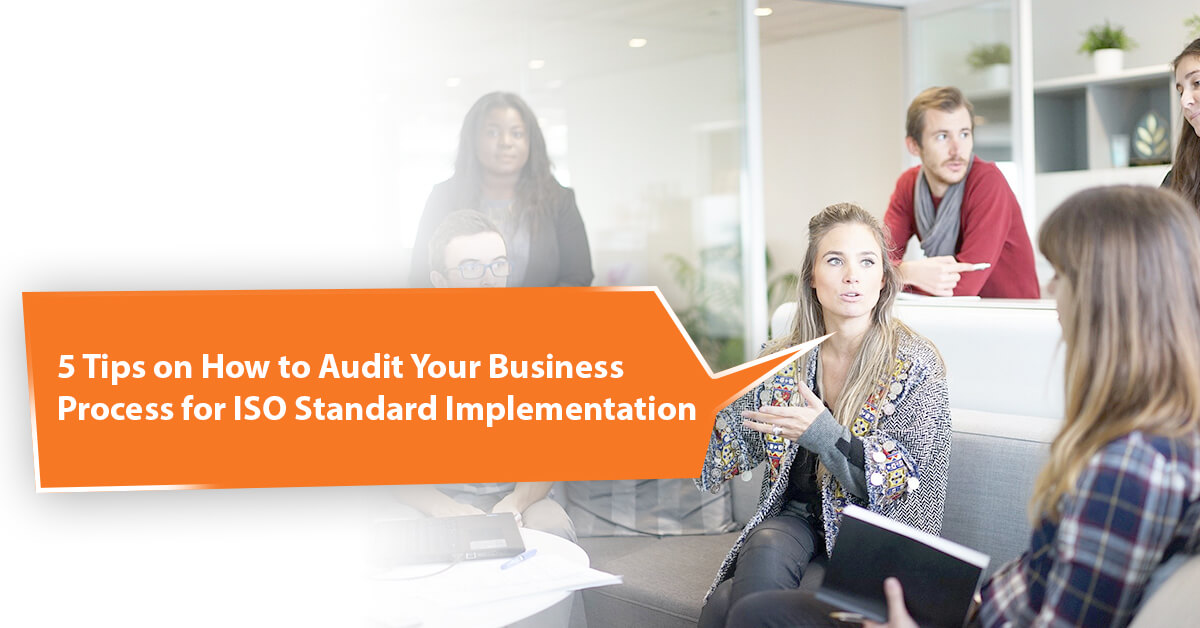
An internal process audit is the last step for businesses before they receive the certification to an ISO standard. An experienced auditor or team of auditors check and evaluate their concerned management system which is to be certified. The auditors can be selected either from within the organisation’s team or from an external agency. They assess the system as well as their processes to ensure whether all the requirements of the ISO standard are met. Since auditing is an inherent step for certification, organisations should know how to audit a business process, even though auditing is often done with the help of an external agency.
Audits are important because based on the findings of the auditors, your organisation is either declared fully ready for the certification or still needing improvements in its management system. To ensure you pass the audit smoothly in one attempt and become eligible for certification, here are the crucial tips to follow.
The audits are mostly performed by experienced officials from within the management team of the company. But, for assistance and better clarity in the process, you can hire external audit experts. Whoever is chosen to do the audit, they must be adept with the procedures and have conducted routine audits.
If only internal team members do the audit, make sure that they are trained adequately for that. They should have appropriate skills for assessing the business processes and analysing their competency as well integration with the management system. They should have an investigative knack and be keen on finding errors or issues in the processes. Other skills that the auditors must have are problem-solving and interpersonal skills like communication ability, active listening, responsible, teamwork and critical thinking.
To best prepare your organisation for the audit, you need to rely on a systematic, well-planned auditing method. If the auditing method is not relevant to your business process and management system, you cannot be assured of the success of certification. Some of the concrete tips to create the most appropriate auditing method are:
• Understand the ISO standard’s requirements minutely which can be ISO 9001, ISO 14001, ISO 45001, ISO 27001, or anything else.
• Determine the departments whose processes need auditing. The departments that need to be audited depend on the type, size, and hierarchy of the organisation. In case, you are unable to understand which departments should be assessed, you need to think which departments are integrated with the management system.
• Determine the audit frequency which means the number of times audit should be done to make sure every process and management system is fully ready for certification.
• Develop an audit plan where you would mention the purpose, resources required (including employees), timeline to complete, and a checklist.
The main step comes which is performing the audit of your business process and the integrated management system. When the audit process begins, you should make sure that everyone is involved, along with the auditors. The more employees from other departments come forward to assist the auditors, the better it is. Doing that makes everyone aware of the new changes made in processes and how the management system works. As a result, they get quite acquainted with the changes in their responsibilities and get prepared to face the external audit.
Also, make sure to take the most advantage of the audit. Make sure to ask as many insights as possible from the auditors at every step. It helps you to understand their expectations and get a fair idea of your preparedness for certification.
On completion of the audit process, the auditors collect all their observations and insights, and compile them in a report. The report is then discussed in a closed-door meeting with managers and senior officials of each department. In the report, the auditors mainly elaborate on the issues of non-compliance in the management system and inadequacies in the processes. Auditors also provide recommendations along with the report. The senior members and managers then together acknowledge the recommendations and determine what corrective actions are required for eliminating all the issues.
Do planning, assign responsibilities to employees, and allocate resources to address every problem identified in the audit. Give your best efforts to use the audit findings. By acting at the earliest, you can be able to determine foolproof solutions to each flaw identified in the management system or processes of your business.
If you overlook any issue uncovered by the auditors, your certification gets delayed, or you can even lose the chance of certification. For this reason, it is immensely important to perceive the findings as well as recommendations of the auditors in the constructive sense. Execute the corrective actions and then follow up with the auditors to verify them. Also, you should make sure to support the changes by incorporating them in the documentation.
The audit is the final yet the most important steppingstone for successful certification of your business with an ISO management standard. Following the above tips on how to audit a business process and the management system helps you drive through the audit complexities easily.
When conducted successfully, you can be confident about facing the external certification audit. When you have already identified the problems and rectified them, it increases your chances of success at the certification.
Are you preparing your organisation to get certified with an ISO standard? Make sure to do your best by appointing the experienced internal auditors. At Compliancehelp, we have a qualified team of auditors adept at assessing all types of business processes and management systems. We can help you! Feel free to contact us.

Get connected with us on social networks!